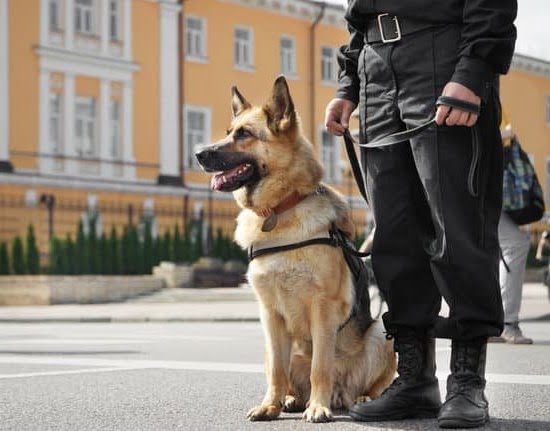When Do Service Dogs Finish Training
Most service dogs finish their training between 12 and 18 months. However, the length of time it takes to train a service dog can vary depending on the needs of the individual dog and the training program. Some service dogs may require more training than others, and some may require specialized training in order to assist their owner with a specific disability.
Service dogs are typically trained by nonprofit organizations or by private trainers who work with the individual dog and its owner to create a training program that meets the specific needs of the owner. Service dogs may be trained to perform a number of tasks, such as guiding a person who is blind or has low vision, alerting a person who is deaf or hard of hearing, providing physical assistance to a person with a disability, or helping to manage a person’s medical condition.
Many service dogs are trained to perform multiple tasks, and some dogs may be trained to do specific tasks for their owner depending on the owner’s disability. For example, a service dog may be trained to retrieve items for a person who has difficulty walking, or to remind a person to take their medication.
The length of time it takes to train a service dog can vary depending on the needs of the dog and the training program. However, most service dogs are fully trained between 12 and 18 months.
What Can I Train My Service Dog To Do
The possibilities are endless when it comes to training service dogs. However, there are a few basic commands that all service dogs should know. These commands can help your service dog be more effective in assisting you with your disability.
The first command is “sit.” This is a basic obedience command that all dogs should know. It is also one of the most important commands for a service dog. “Sit” can be used to help your dog stay in place while you are working or to stop your dog from jumping on people.
The next command is “down.” This command is used to get your dog to lie down. “Down” is a good command to use when you need your dog to stay in one spot.
The next command is “stay.” This command is used to keep your dog in place. “Stay” can be used to keep your dog from wandering away or from getting into trouble.
The next command is “come.” This command tells your dog to come to you. “Come” is a very important command for a service dog. It can be used to get your dog’s attention or to have your dog come to you in an emergency.
The final command is “leave it.” This command tells your dog to leave something alone. “Leave it” can be used to keep your dog from getting into trouble or from eating something that might make them sick.
Along with these basic commands, you will also need to train your service dog to perform specific tasks that are related to your disability. Each person’s needs are different, so there is no one-size-fits-all training program for service dogs. However, there are some basic tasks that all service dogs should be able to do.
Some common tasks that service dogs are trained to do include retrieving dropped items, opening doors, pushing buttons, and pulling wheelchairs. Service dogs can also be trained to provide emotional support and companionship. If you have a specific task that you would like your service dog to perform, talk to your dog trainer about how you can get your dog trained to do it.
Is Training Service Dogs Full Time
a Viable Career
The quick answer to this question is yes, training service dogs full time is a viable career. However, there are a few things to consider before making the decision to become a full-time service dog trainer.
The first thing to consider is whether or not you have the necessary skills to become a service dog trainer. Service dog training is a highly specialized field, and it takes a lot of skill and knowledge to train a service dog properly. You need to be able to not only train the dog to perform the necessary tasks, but also to properly socialize and temperament train the dog.
The second thing to consider is whether or not there is a demand for service dog trainers. The demand for service dogs is growing every year, so there is definitely a demand for service dog trainers. However, the demand for service dog trainers is not always equal in all parts of the country. So, you may want to do some research on the demand for service dog trainers in your area before making the decision to become a full-time service dog trainer.
The third thing to consider is whether or not you have the financial resources to become a full-time service dog trainer. Training service dogs can be a very expensive endeavor, and it can be difficult to make a living as a full-time service dog trainer. So, you need to make sure that you have the financial resources to support yourself as a full-time service dog trainer.
If you have the necessary skills, there is a demand for service dog trainers, and you have the financial resources to support yourself, then training service dogs full time is a viable career. It can be a very rewarding career, and it can be a lot of fun working with service dogs and their handlers.
How To Train A Service Dog To Work
With A Disability
Service dogs are amazing creatures. They are able to help people with disabilities in ways that no other animal can. But, before a service dog can be of any use to their handler, they must be properly trained.
The process of training a service dog is a long and arduous one, but it is well worth it in the end. The first step in training a service dog is to socialize them with as many different people, animals, and environments as possible. This will help them to be comfortable in any situation and will make them better prepared for the work that they will eventually do.
Once the dog has been socialized, it is time to start teaching them the basic commands that they will need to know in order to serve their handler. These commands might include things like “sit”, “stay”, “come”, and “down”. It is important to make sure that the dog knows these commands inside and out, as they will need to be able to obey them without fail in order to help their handler.
The next step in training a service dog is to teach them how to perform specific tasks that will help their handler. This might include things like retrieving items, opening doors, or pulling a wheelchair. It is important to tailor the training to the specific needs of the handler, as each person will have different requirements from their service dog.
Finally, once the dog has been properly trained, it is important to keep up the training routine. This will ensure that the dog remains well-behaved and able to properly serve their handler.
Training a service dog is a difficult but rewarding process. These animals are able to provide invaluable assistance to people with disabilities, and it is important to make sure that they are properly trained and equipped to do so. With the right training, a service dog can make a huge difference in the life of their handler.
How To Train Service Dog To Nudge
A Wheelchair
All service dogs are different and learn differently. Some may take to nudging a wheelchair right away, while others may take more time and patience. The following is a generalized guide on how to train your service dog to nudge a wheelchair.
1. Start by rewarding your service dog for any type of proximity to the wheelchair. This could include a treat, petting, or verbal praise.
2. Next, begin to slowly move the wheelchair while rewarding your service dog for staying close.
3. Once your service dog is consistently staying close to the wheelchair, begin to gradually increase the speed at which you are moving the wheelchair.
4. Finally, once your service dog is confidently nudging the wheelchair at your desired speed, you can begin to use the behavior in real-world situations.
Remember to always be patient and positive while training your service dog. It may take time and practice, but with patience and perseverance your service dog will be nudging your wheelchair like a pro!

Welcome to the blog! I am a professional dog trainer and have been working with dogs for many years. In this blog, I will be discussing various topics related to dog training, including tips, tricks, and advice. I hope you find this information helpful and informative. Thanks for reading!





